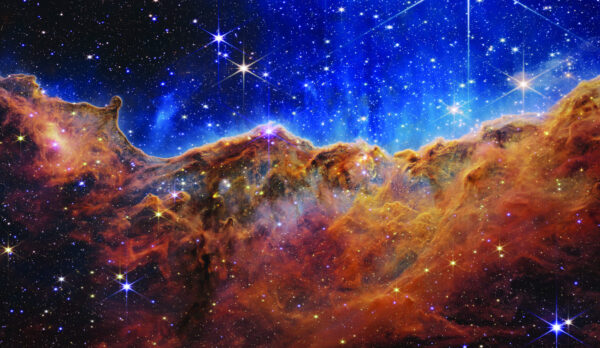On July 11 and 12, 2022, the first set of images captured from the James Webb Space Telescope were released to the public. They included a deep field image speckled with thousands of galaxies, a view of a grouping of five galaxies, images of nebulae with stars enveloped in their variously sculpted dust-rich regions, and a transmission spectrum obtained from starlight filtered through the atmosphere of an exoplanet.
These images mark the highly anticipated beginning of science operations for this space telescope, and they were hailed with press releases around the world because of their stunning resolution, informational value, and intrinsic beauty.
This unprecedented opportunity for cosmic observation naturally engenders a desire for deeper reflection on human ingenuity, God’s creation, and a biblical understanding of our place and meaning in the cosmos.
The Hallmark of a Good Creation
The successful acquisition of images by the James Webb Space Telescope is the product of more than 30 years of planning and implementation of a complex project by thousands of scientists, engineers, and technicians. From Galileo’s telescope to modern particle accelerators, technology and instrumentation have often been the catalysts for the discovery of new phenomena in nature and have helped us discriminate between competing ideas for their explanation.
Undoubtedly the Webb telescope will similarly contribute to the expansion of the frontiers of knowledge. Irrespective of the scientific advancements that will be made possible by this instrument, however, its very existence and active operation are a testament to human ingenuity.
This incredible artifact built on earth and now located in space about four times farther than the moon’s orbit embodies the essence of what really makes us special: in science as in art, it is the ability to conceive, design, create, and implement something that was not there before. Scientific collaborations of this kind, especially when intended for the benefit of all, are an expression of how humans were made in God’s image.
Learning About the Cosmos
What are some of the specific questions expected to be answered thanks to the James Webb Space Telescope?
It is fascinating to think that astrophysicists will be able to use data acquired by the Webb telescope to extract generalities from the vast array of possibilities in configuration and composition that exist among galaxies, stars, and exoplanets. This ability to make sense of the cosmos, categorizing and understanding the dynamics of its phenomena, is what makes the scientific study of the creation remarkably fulfilling. Intelligibility and consistency occur within a tapestry of innumerable combinations and testify not only to the wisdom and greatness of God, but also to His desire to be known. His thoughts outnumber the grains of sand on our planet, and yet we can reflect upon them (Ps. 139:17, 18).
Between the Earthly and the Heavenly
In looking at the images obtained from the James Webb Space Telescope, I feel a little like David in his contemplation of the night sky. I am made aware not only of my finite state, but also of my value. God assigned to humans the earth as their home. And yet, while grounded daily in the earthly reality, we have been given the opportunity to consider the heavens. About 3,000 years ago David did not know of black holes or exoplanets or galactic collisions. Yet his inspired words of amazement and adoration ring so incredibly true: “Lord, our Lord, how majestic is your name in all the earth! You have set your glory in the heavens” (Ps. 8:1, NIV).


